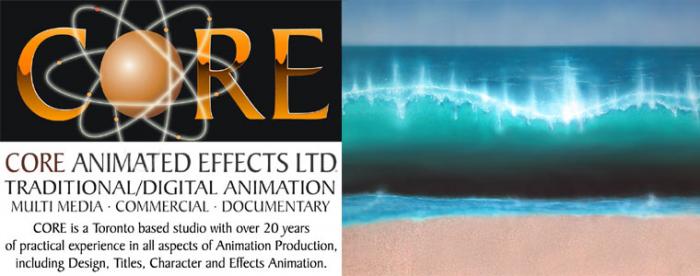
For our Interview Series we have focused on two primary sources of animation professionals: studio animators or owners and professors. But this time around we have one man that's all of the above. Trevor Davies is both the owner of CORE Animated Effects and a professor at the renowned Animation program at Sheridan College.
The age-old adage “those who can't do, teach” certainly does not apply to Trevor. Trevor is a 25-year industry veteran, successfully runs a studio created before many of his students are born—and started it all over two decades ago with just $6,000 in the bank and small legal-prep kit.
But enough of me blathering on, you all came here to read Trevor's illustrious words. We got a chance to speak with Trevor about his failures, successes and advice to aspiring animators—and here are the inspiring results:
What is your firm's focus within animation and what led your firm to have such a focus?
Independent Production, Effects Animation, Technical Animation, Titles and Credits. We've always been attracted to a Grafilm approach and the short-film aesthetic.
Fill in the blank: The future of animation is ________.
Decentralized and accessible.
What are the best and worst aspects about working in the animation field?
Members of the Animation Community are generally upbeat and have a zest for life. On the downside, Animation is a slow and laborious process - one likened to writing a novel, at one word a day.
What skills/qualities does your firm seek out when hiring new employees?
Artistic talent, creativity, a techno-savy base and understanding of film language.
What particular schools, if any, does your firm recruit new hires from?
Sheridan College, St. Clair College and Centennial College.
What advice would you give to aspiring animators?
Watch films other than animation. Watch international and independent films. Go to Art Galleries and travel when you get the chance.
What were your most challenging projects, and why?
They all offer unique challenges I think: TV commercials because of their tight deadlines, documentaries due to limited budgets, the sheer volume of work in television series production and feature films because of the of the longer format and the increased scope that affords.
What kind of education did it take to get you where you are today?
I'm a graduate of Emily Carr Institute of Art and Design in Vancouver B.C.
What animation software packages does your firm prefer to use? Which one would you recommend to beginners?
The standards vary from studio to studio but locally, I think you will be marketable with good skills in Photoshop, ToonBoom or Flash, Maya or 3DMax, Sculpting Tools like Mudbox or Z-Brush, After Effects and Premiere or Final Cut Pro.
Could you share with us your best story about working in the animation industry.
Yikes! I should have scanned ahead to see what questions were coming.
Well, in the early days people working in the large studios deserve accolades for eccentricities such as: ...one animator began decorating his animation desk with some personal possessions from home and over the next several weeks, ended up constructing a small cardboard cabin around his light table, complete with roof, a small door and window (incl. functioning shutters) where he virtually lived.
People travel light these days.
Has the trend of outsourcing animation overseas affected your firm, if yes, how have you dealt with it or compensated for it?
Outsourcing has changed the market. Currently, local work tends to be more in the design end and development. To that end we are focused more on creating original content than we did in the past, when we were more focused on service work.
Do you think that there is an increasing or decreasing demand for animators overall? Why?
My take on the animation industry is that it has grown immensely and continues to grow. It's changed dramatically from a quaint spring-fed lake to a sprawling wetland. Animation is an efficient way to communicate visually and to tell stories. Animation also seems to have fewer cultural barriers to impede reaching out to a broad audience.

